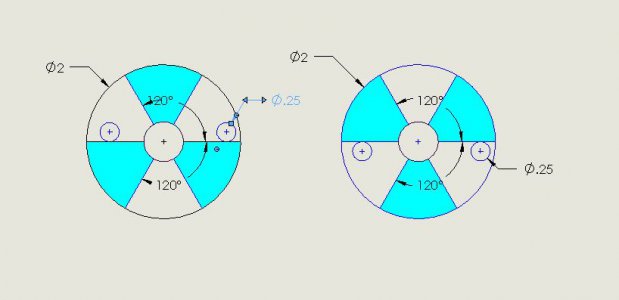- Joined
- Feb 1, 2015
- Messages
- 9,994
My previous post was in error. As @benmychree e states the first cut can be made by milling completely through the part. Then rotate 120º to make the second pass and 240º for the third pass. The rotate to 60º and offset by the cutter diameter to the opposite side of the centerline and make the fourth pass. Rotate 120º for the fifth pass and 240º for the final pass. Hopefully, the diagram below will clarify.





